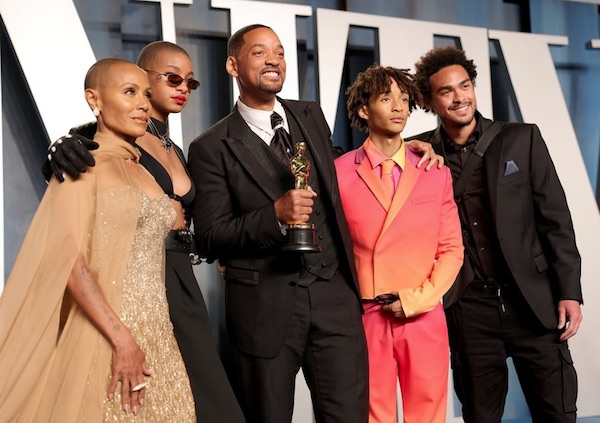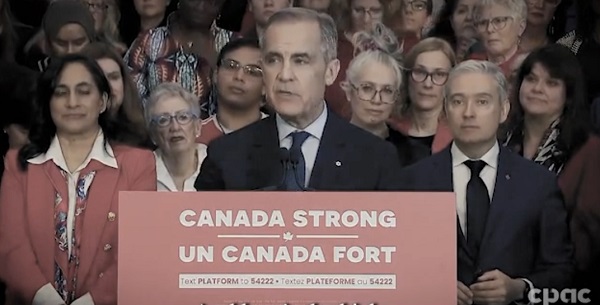Entertainment
New Music you didn’t know you needed to hear… Or did you?

Music to get you through.
Quarantine is no match for the power of music. What an unprecedented time in our history where LIVE ENTERTAINMENT has come to a screeching halt. Sort of, I mean you can catch it Live Stream. While we are all grateful for such a platform where that can be a possibility, it simply can’t replace intimate in person Live Entertainment.
What are we left with? Well hey, thats up to us individually now isn’t it? WE WILL GET THROUGH THIS, that I’m sure of. I remember just simply listening to my favourite music until my cassettes didn’t work anymore or they were eaten every friggin time I’d try to give it a whirl. Just the act of listening to music could take up hours and hours of my day. Back then I would have done anything to have the access to music that I have now. It’s instant now. Any music we want at our finger tips. I say we start a movement where we dedicate some mental health time to listening to music. Bring back the ‘lay on the floor and stare at the ceiling’ kind of listening to music days.
Not only is it unbelievably therapeutic but there is so much NEW MUSIC right now that is so good!
Heres three albums that are sure to keep you busy, you’ve probably got them on repeat anyways:
1. Eternity Now – Big Sugar
Plain and simple, it’s hard to argue with the signature guitar and vocal sound of Gordie Johnson. Guys like me dream of attaining it daily. The energy Big Sugar produces on and off stage is remarkable. Rock n’ Roll fused with Reggae and Blues that lights a fire in your heart. This album is fresh and relevant. It’s always amazing to see how Big Sugar stays on top of the wave. Turn it up loud, grab a chair for the deck and take a little trip down the new Big Sugar highway that is ‘Eternity Now.’

2. Dog City – Matt Mays
Ooh wee! Matt Mays is one of the best songwriters we’ve been blessed with as Canadians. Matt has a way with words that will bypass everything and hit you right in the soul. This album is a simple raw record that Matt did himself during this quarantine time we’ve been told was the “new normal.” What a great concept on a record. Through the eyes of human kinds best friend. put the headphones on and take this one in with some fresh coffee and baileys. Or whatever…

3. Notes on a Conditional Form – The 1975
Not gonna lie… The 1975 was not an instant appreciation. I mean of course I respected their work etc. I just wasn’t into it. At first. After warming up to the indie weirdness that somehow has crossed into the mainstream I really started to enjoy them and found myself paying more and more attention to their music. Needless to say The 1975 is a trip all its own. Put this on and lay back on the couch, stare up and enjoy. So much to get lost in. Something different.

Business
California planning to double film tax credits amid industry decline

From The Center Square
By
California legislators have unveiled a bill to follow through with the governor’s plan of more than doubling the state’s film and TV production tax credits to $750 million.
The state’s own analysis warns it’s likely the refundable production credits generate only 20 to 50 cents of state revenue for every dollar the state spends, and the increase could stoke a “race to the bottom” among the 38 states that now have such programs.
Industry insiders say the state’s high production costs are to blame for much of the exodus, and experts say the cost of housing is responsible for a significant share of the higher costs.
The bill creates a special carve-out for shooting in Los Angeles, where productions would be able to claim refundable credits for 35% of the cost of production.
California Gov. Gavin Newsom announced his proposal last year and highlighted his goal of expanding the program at an industry event last week.
“California is the entertainment capital of the world – and we’re committed to ensuring we stay that way,” said Newsom. “Fashion and film go hand in hand, helping to express characters, capture eras in time and reflect cultural movements.”
With most states now offering production credits, economic analysis suggests these programs now produce state revenue well below the cost of the credits themselves.
“A recent study from the Los Angeles County Economic Development Corporation found that each $1 of Program 2.0 credit results in $1.07 in new state and local government revenue. This finding, however, is significantly overstated due to the study’s use of implausible assumptions,” wrote the state’s analysts in a 2023 report. “Most importantly, the study assumes that no productions receiving tax credits would have filmed here in the absence of the credit.”
“This is out of line with economic research discussed above which suggests tax credits influence location decisions of only a portion of recipients,” continued the state analysis. “Two studies that better reflect this research finding suggest that each $1 of film credit results in $0.20 to $0.50 of state revenues.”
“Parks and Recreation” stars Rob Lowe and Adam Scott recently shared on Lowe’s podcast how costs are so high their show likely would have been shot in Europe instead.
“It’s cheaper to bring 100 American people to Ireland than to walk across the lot at Fox past the sound stages and do it and do it there,” said Lowe.
“Do you think if we shot ‘Parks’ right now, we would be in Budapest?” asked Scott, who now stars in “Severance.”
“100%,” replied Lowe. “All those other places are offering 40% — forty percent — and then on top of that there’s other stuff that they do, and then that’s not even talking about the union stuff. That’s just tax economics of it all.”
“It’s criminal what California and LA have let happen. It’s criminal,” continued Lowe. “Everybody should be fired.”
According to the Public Policy Institute of California, housing is the single largest expense for California households.
“Across the income spectrum, 35–44% of household expenditures go to covering rent, mortgages, utilities and home maintenance,” wrote PPIC.
The cost of housing due to supply constraints now makes it nearly impossible for creatives to get their start in LA, said M. Nolan Gray, legislative director at housing regulatory reform organization California YIMBY.
“Hollywood depends on Los Angeles being the place where anybody can show up, take a big risk, and pursue their dreams, and that only works if you have a lot of affordable apartments,” said Gray to The Center Square. “We’ve built a Los Angeles where you have to be fabulously wealthy to have stable and decent housing, and as a result a lot of folks either are not coming, or those who are coming need to paid quite a bit higher to make it worth it, and it’s destroying one of California’s most important industries.”
“Anybody who arrived in Hollywood before the 2010s, their story is always, ‘Yeah, I showed up in LA, and I lived in a really, really dirt-cheap apartment with like $10 in my pocket.’ That just doesn’t exist anymore,” continued Gray. “Does the Walt Disney of 2025 not take the train from Kansas City to LA? Almost certainly not. If he goes anywhere, he goes to Atlanta.”
Business
Disney cancels series four years into development, as it moves away from DEI agenda

 MxM News
MxM News
Quick Hit:
Disney’s decision to cancel its planned ‘Tiana’ streaming series follows the entertainment giant’s move away from diversity, equity, and inclusion (DEI) policies. The company, once deeply committed to political activism, is now struggling to recover from years of financially disastrous content choices.
Key Details:
-
Disney announced the end of DEI-based management decisions and the winding down of its “Reimagining Tomorrow” initiative earlier this year.
-
The Hollywood Reporter revealed that the cancellation of ‘Tiana’ was part of Disney’s broader retreat from “original longform content for streaming.”
-
Analyst Ian Miller notes that Disney’s prior focus on political messaging rather than quality content led to repeated box office failures.
Diving Deeper:
Disney has spent the past several years prioritizing political activism over storytelling, leading to a sharp decline in the company’s financial performance and audience engagement. According to Ian Miller of OutKick, “Disney assumed that any content that represented ‘diverse’ audiences or featured ‘diverse’ characters would be successful.” That assumption, he argues, proved costly.
The decision to cancel ‘Tiana’ comes at a time when Disney is reeling from multiple box office disappointments, including the expected failure of ‘Snow White’ and the ongoing struggles of both Marvel and Lucasfilm properties. Miller highlights the alarming trend, stating, “Marvel’s ‘Captain America: Brave New World’ may actually lose money, with a disastrous $342 million worldwide gross through the first three and a half weeks.”
The ‘Tiana’ series was first announced in December 2020, a time when Disney was fully embracing its progressive agenda. The Hollywood Reporter noted that the show struggled to find its creative direction despite being in development for over four years. Miller suggests that, in the past, Disney would have continued with such a project regardless of its quality, out of fear of backlash from the left. “Under its prior operating mandate, Disney would have pushed forward anyway, believing that canceling a show based on a black character would be unacceptable to left-wing critics,” Miller writes.
However, the company’s recent shift suggests an overdue recognition that audiences ultimately demand quality over ideology. As Miller points out, “Parents want to take their kids to the movies, or give them family-friendly content to watch at home when they need a distraction. For decades, that meant Disney. Until the company prioritized targeting demographics instead of quality.”
While Disney appears to be learning from its missteps, the road to recovery will be long. As Miller emphasizes, the key to regaining audience trust isn’t to abandon diverse characters but to “get it right instead of doing it to check a box.”
-

 2025 Federal Election2 days ago
2025 Federal Election2 days agoCarney’s Fiscal Fantasy: When the Economist Becomes More Dangerous Than the Drama Teacher
-

 International6 hours ago
International6 hours agoPope Francis has died aged 88
-

 2025 Federal Election1 day ago
2025 Federal Election1 day agoCampaign 2025 : The Liberal Costed Platform – Taxpayer Funded Fiction
-

 2025 Federal Election1 day ago
2025 Federal Election1 day agoA Perfect Storm of Corruption, Foreign Interference, and National Security Failures
-

 Business6 hours ago
Business6 hours agoCanada Urgently Needs A Watchdog For Government Waste
-

 Energy6 hours ago
Energy6 hours agoIndigenous-led Projects Hold Key To Canada’s Energy Future
-

 2025 Federal Election5 hours ago
2025 Federal Election5 hours agoCarney’s budget means more debt than Trudeau’s
-

 International2 hours ago
International2 hours agoPope Francis Dies on Day after Easter








